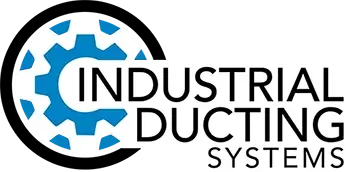Paper & Packing Manufacturing Ducting Solutions
Paper and packaging manufacturing involves complex processes that generate multiple types of airborne contaminants including fiber dust, chemical vapors, and combustible particles. Modern facilities often integrate recycling operations, pulp processing, paper formation, coating, and converting operations that each present unique air quality challenges.
The industry has evolved toward higher-speed production and increased automation, creating more intense emission sources that require sophisticated capture systems. Coating and printing operations involve volatile organic compounds (VOCs) and hazardous air pollutants that require specialized handling. Additionally, the trend toward sustainable packaging has introduced new materials and processes that may generate previously unencountered airborne contaminants.
Paper manufacturing facilities face significant challenges related to humidity control, as paper production requires precise moisture management that can complicate ventilation system design. The industry also contends with combustible dust hazards from paper fiber dust and potential explosion risks in certain processing areas.
Specific Air Quality Requirements & Regulations
Paper and packaging manufacturers must comply with multiple EPA regulations under the Pulp and Paper Manufacturing Point Source Category. The Cluster Rule (40 CFR 63 Subpart S) establishes comprehensive air emission standards for pulp and paper facilities, addressing both hazardous air pollutants and conventional pollutants.
OSHA's combustible dust National Emphasis Program applies to paper manufacturing operations that generate fine fiber dust. Facilities must conduct dust hazard analyses and implement explosion prevention measures where combustible dust hazards exist.
VOC emissions from coating and printing operations are regulated under various EPA rules, including the Printing and Publishing Point Source Category. Many facilities operate under Title V permits that strictly limit emissions and require continuous monitoring systems.
Temperature requirements vary significantly across paper manufacturing. Pulp processing may involve temperatures up to 300°F, while coating operations can require 400-500°F. Drying operations often involve high-temperature air recirculation systems that must be carefully integrated with ventilation systems.
Construction Process & System Design Considerations
Paper manufacturing facilities require comprehensive ventilation systems addressing the entire production process from raw material handling through finished product packaging. The construction process must accommodate the continuous nature of paper production, often requiring creative scheduling to minimize production disruption.
Ductwork design must address the high-humidity environment typical in paper manufacturing, requiring corrosion-resistant materials and condensation management systems. Fiber dust collection systems must be designed to prevent accumulation that could create fire hazards or equipment malfunction.
Installation must coordinate with the complex utility systems typical in paper manufacturing, including steam lines, hydraulic systems, and process water piping. Temporary ventilation systems may be necessary during construction to maintain worker safety and production requirements.
Explosion prevention measures may be required for operations generating combustible fiber dust, particularly in pulp processing and paper converting operations. These systems must be integrated into the overall facility design while maintaining production efficiency.
Technical Specifications & Performance Requirements
Paper manufacturing ventilation systems handle substantial air volumes, typically 200,000 to 2,000,000 CFM for complete facilities. Individual process areas may require 20,000-100,000 CFM depending on production volume and emission characteristics.
Ductwork materials must withstand high humidity and potential chemical exposure. Stainless steel or specially coated galvanized steel is preferred for high-humidity applications, while standard galvanized steel may be suitable for dry process areas. Corrosion-resistant coatings are essential for long-term durability.
Transport velocities must be sufficient to prevent fiber accumulation while minimizing energy consumption. Typical design velocities range from 3,000-4,000 FPM for main lines carrying fiber dust and up to 2,500 FPM for systems handling lighter paper particles.
Static pressure requirements typically range from 15-25 inches of water column, depending on filtration requirements and system complexity. Humidity control systems may require additional pressure capabilities and specialized moisture management equipment.
How Industrial Ducting Systems Delivers Solutions
Industrial Ducting Systems understands the complex requirements of paper and packaging manufacturing, from traditional pulp processing to modern converting operations. Our comprehensive approach addresses both emission control and process air requirements while maintaining production efficiency.
Our 2D CAD design services provide detailed system layouts that integrate with your facility's continuous production processes and complex utility systems.
Our material expertise ensures proper selection of corrosion-resistant components for high-humidity environments and chemical exposure. We provide comprehensive quantity take-offs that account for specialized materials and moisture management systems required for paper manufacturing applications.
Our logistics coordination addresses the unique challenges of paper manufacturing scheduling, understanding that production interruptions can be extremely costly. We provide installation approaches that minimize disruption to continuous production processes while ensuring effective ventilation performance.
Experience the Industrial Ducting Systems Advantage
Corrosion-resistant construction, humidity management, continuous operation expertise—discover why paper manufacturers trust us with their most challenging fiber dust and emission control needs. Let's design a system that exceeds your expectations.
